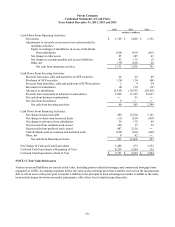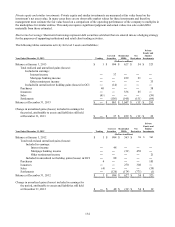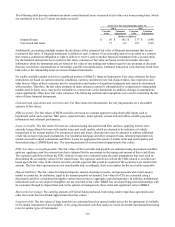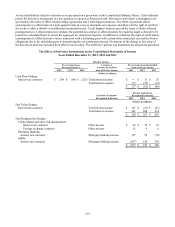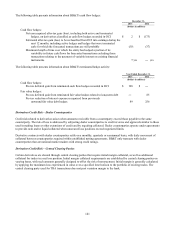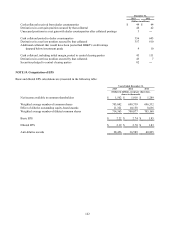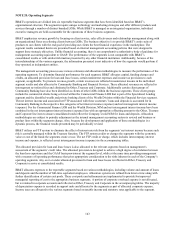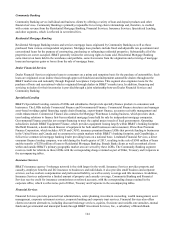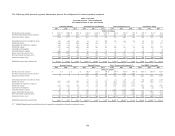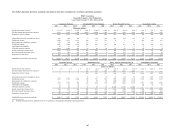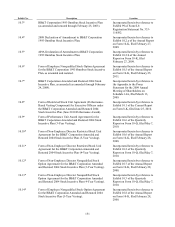BB&T 2013 Annual Report Download - page 141
Download and view the complete annual report
Please find page 141 of the 2013 BB&T annual report below. You can navigate through the pages in the report by either clicking on the pages listed below, or by using the keyword search tool below to find specific information within the annual report.
141
The following table presents information about BB&T's cash flow hedges:
December 31,
2013 2012
(Dollars in millions)
Cash flow hedges:
N
et unrecognized afte
r
-tax gain (loss), including both active and terminated
hedges, on derivatives classified as cash flow hedges recorded in OCI $ 2 $ (173)
Estimated after-tax gain (loss) to be reclassified from OCI into earnings during the
next 12 months, including active hedges and hedges that were terminated
early for which the forecasted transactions are still probable (50) (37)
Maximum length of time over which the entity has hedged a portion of its
variability in future cash flows for forecasted transactions excluding those
transactions relating to the payment of variable interest on existing financial
instruments. 7 yrs ― yrs
The following table presents information about BB&T's terminated hedge activity:
Year Ended December 31,
2013 2012
(Dollars in millions)
Cash flow hedges:
Pre-tax deferred gain from terminated cash flow hedges recorded in OCI $ 198 $ ―
Fair value hedges:
Pre-tax deferred gain from terminated fair value hedges related to long-term debt ― 85
Pre-tax reduction of interest expense recognized from previously
unwound fair value debt hedges 89 256
Derivatives Credit Risk – Dealer Counterparties
Credit risk related to derivatives arises when amounts receivable from a counterparty exceed those payable to the same
counterparty. The risk of loss is addressed by subjecting dealer counterparties to credit reviews and approvals similar to those
used in making loans or other extensions of credit and by requiring collateral. Dealer counterparties operate under agreements
to provide cash and/or liquid collateral when unsecured loss positions exceed negotiated limits.
Derivative contracts with dealer counterparties settle on a monthly, quarterly or semiannual basis, with daily movement of
collateral between counterparties required within established netting agreements. BB&T only transacts with dealer
counterparties that are national market makers with strong credit ratings.
Derivatives Credit Risk – Central Clearing Parties
Certain derivatives are cleared through central clearing parties that require initial margin collateral, as well as additional
collateral for trades in a net loss position. Initial margin collateral requirements are established by central clearing parties on
varying bases, with such amounts generally designed to offset the risk of non-payment. Initial margin is generally calculated
by applying the maximum loss experienced in value over a specified time horizon to the portfolio of existing trades. The
central clearing party used for TBA transactions does not post variation margin to the bank.


